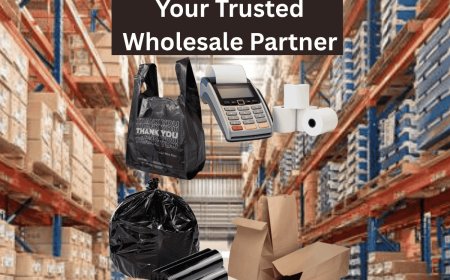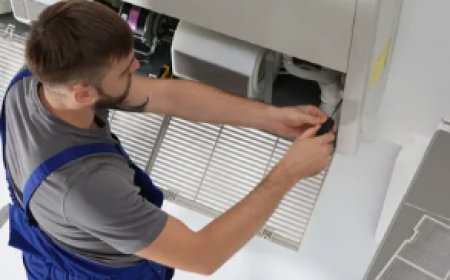Top 5 Ways Integrated Payment Systems Boost Retail Efficiency for Small Businesses
In the fast-evolving UK retail landscape of 2025, small businesses face intense pressure to deliver seamless customer experiences while keeping operations lean. Integrated payment systems, like those offered by MHouse, a leading UK-based EPOS provider, are transforming how small retailers operate. By combining payment processing with advancedElectronic Point of Sale (EPOS) functionality, these systems streamline transactions, reduce errors, and enhance efficiency. This article explores the top five ways integrated payment systems boost retail efficiency for small businesses, with practical examples and insights tailored to the UK market.
1. Faster Transactions with Seamless Payment Integration
Speed is critical in small retail settings, where long queues can drive customers away. Integrated payment systems combine card readers, contactless payments, and mobile payment options (like Apple Pay and Google Pay) into a single EPOS platform. MHouses EPOS, for instance, supports multiple payment methods, ensuring transactions are processed in seconds without manual intervention.
Consider a small caf in Bristol using MHouses integrated system. Before adoption, staff manually entered card payments, leading to delays during peak hours. After switching to MHouses EPOS, transaction times dropped by 40%, allowing the caf to serve 15% more customers during lunch rushes. Faster checkouts mean happier customers and higher throughput, directly impacting revenue for small businesses.
2. Reduced Errors and Improved Accuracy
Manual payment processes, such as entering amounts on separate card machines, are prone to human error, leading to discrepancies and customer disputes. Integrated payment systems eliminate this by syncing payment data directly with the EPOS. MHouses platform automatically reconciles sales with payments, ensuring every transaction is accurate and recorded in real time.
A family-run convenience store in Leeds faced frequent cash-out errors before adopting MHouses system. After implementation, the store reduced reconciliation errors by 90%, saving hours of manual bookkeeping each week. For small businesses with limited staff, this accuracy translates to significant time savings and fewer financial headaches.
3. Enhanced Customer Experience with Contactless and Mobile Payments
In 2025, UK customers expect flexible payment options. Integrated payment systems support contactless cards, mobile apps, and even QR code payments, catering to modern consumer preferences. MHouses EPOS ensures these options are seamlessly embedded, allowing customers to pay however they prefer without slowing down the checkout process.
Take a boutique clothing store in Manchester as an example. By adopting MHouses integrated payment system, the store introduced contactless and mobile payments, which accounted for 60% of transactions within three months. Customers appreciated the convenience, leading to a 12% increase in repeat visits. For small retailers, offering diverse payment methods builds trust and loyalty, driving long-term growth.
4. Streamlined Operations with Real-Time Reporting
Integrated payment systems do more than process transactionsthey provide valuable data to optimize operations. MHouses EPOS offers real-time reporting on sales trends, peak payment times, and popular payment methods. This allows small business owners to make informed decisions, such as adjusting staffing levels or targeting promotions based on payment data.
A small bakery in Edinburgh used MHouses reporting tools to identify that 70% of its sales occurred before 10 AM. By reallocating staff to morning shifts and promoting breakfast deals via contactless payments, the bakery increased daily revenue by 8%. For small businesses with tight budgets, these insights are crucial for maximizing efficiency without additional costs.
5. Scalability for Growing Retail Businesses
As small businesses grow, their payment needs evolve. Integrated payment systems offer scalability, allowing retailers to add new payment methods or expand to multiple locations without overhauling their setup. MHouses cloud-based EPOS ensures that payment data syncs across stores, providing a unified view of transactions and simplifying management.
A growing chain of vape shops in Glasgow illustrates this. Starting with one location, the retailer adopted MHouses integrated system and later expanded to three stores. The cloud-based platform allowed seamless payment integration across all locations, reducing setup costs by 20% compared to traditional systems. For small businesses with growth ambitions, this scalability ensures efficiency at every stage.
Why Integrated Payment Systems Matter in 2025
For UK small retailers, efficiency is the key to competing with larger chains and e-commerce giants. Integrated payment systems, like those from MHouse, address critical pain points: slow transactions, manual errors, outdated payment methods, lack of data, and scalability challenges. By adopting these systems, small businesses can save time, reduce costs, and enhance customer satisfactionall while positioning themselves for growth.
MHouses EPOS stands out for its user-friendly interface, robust payment integration, and cloud-based flexibility, tailored specifically for UK retailers. Whether you run a caf, boutique, or convenience store, these systems offer a path to operational excellence. In 2025, embracing integrated payment technology isnt just a luxuryits a necessity for small businesses aiming to thrive in a competitive market.
































